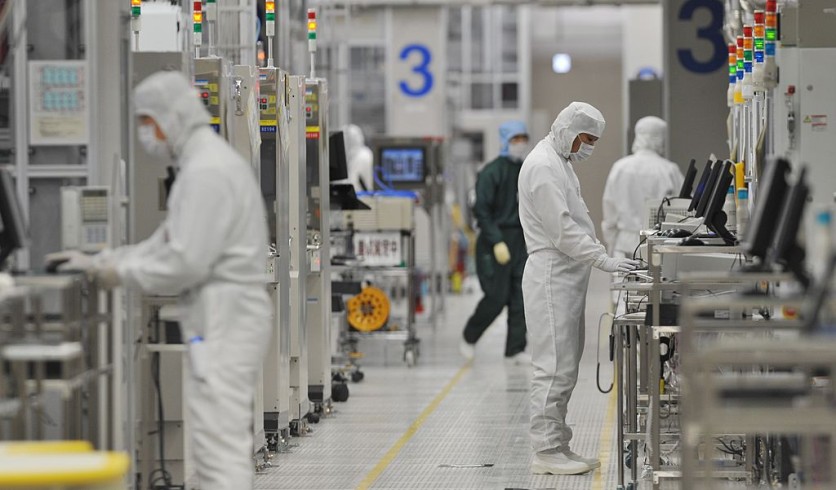South Korea's ambitious $473 billion plan aims to establish the world's largest semiconductor hub by 2047, with Samsung Electronics and SK Hynix at the forefront.

Employees of Japan's microprocessor maker Renesas Electronics work at the company's Naka wafer fabrication factory in Hitachinaka, Ibaraki prefecture on June 10, 2011.
World's Largest Semiconductor
The proposed "semiconductor mega cluster" will stretch across 8.1 square miles, from Pyeongtaek to Yongin, and boasts a substantial investment of 622 trillion won. The initiative targets global chip industry dominance and envisions the creation of 3 million jobs.
By 2030, Interesting Engineering reported that the plan anticipates achieving a monthly production capacity of 7.7 million wafers. Specific zones are designated for different aspects of semiconductor manufacturing, underscoring South Korea's strategic vision for a thriving and comprehensive chip ecosystem.
Samsung Electronics will lead the investment with a commitment of 500 trillion won, allocating a substantial 360 trillion won budget for six new fabs in Yongin, an additional 120 trillion won for three new fabs in Pyeongtaek, and three research fabs in Giheung.
SK Hynix plans to invest 122 trillion won to construct four new factories in Yongin. President Yoon Suk Yeol anticipates that the semiconductor mega cluster will generate at least three million jobs over the next two decades.
South China Morning Post reported that the government aims for a substantial increase in market share, targeting 10 percent of the global market for non-memory chips by 2030, a significant rise from the current estimate of 3 percent.
To secure the prosperity of the semiconductor mega cluster, the government is dedicated to fostering self-sufficiency within the supply chain, targeting 50 percent autonomy in key materials, parts, and equipment by 2030.
A testbed for suppliers of chip-related materials and equipment is slated to commence operations at the Yongin complex by 2027. President Yoon Suk Yeol emphasized the critical role of the semiconductor industry and the expected impact on job creation.
He addressed concerns about extending tax credits, asserting that if tax credits lead to increased investment by semiconductor businesses, it would significantly enhance profits and job opportunities for all businesses within the same ecosystem, subsequently boosting state tax revenues.
South Korea's Strategic Initiative
South Korea's strategic initiative follows the global pattern of nations such as Japan and Taiwan making substantial investments in their semiconductor industries.
The government's emphasis on tax incentives for local chip companies underscores its commitment to safeguard a critical sector that constitutes approximately 16 percent of total exports.
South Korea's ambitious plan to establish the world's largest semiconductor mega cluster marks a decisive move to solidify its standing in the fiercely competitive global chip industry.
Backed by substantial investments from the private sector, government backing, and a focus on self-sufficiency, Yonhap reported that the undertaking aims to fortify the domestic semiconductor market, making substantial contributions to job creation and economic expansion.
Related Article : Foxconn's Failed $19.5 Billion Semiconductor Plant Joint Venture in India Shows How Difficult It Is for New Competitors





